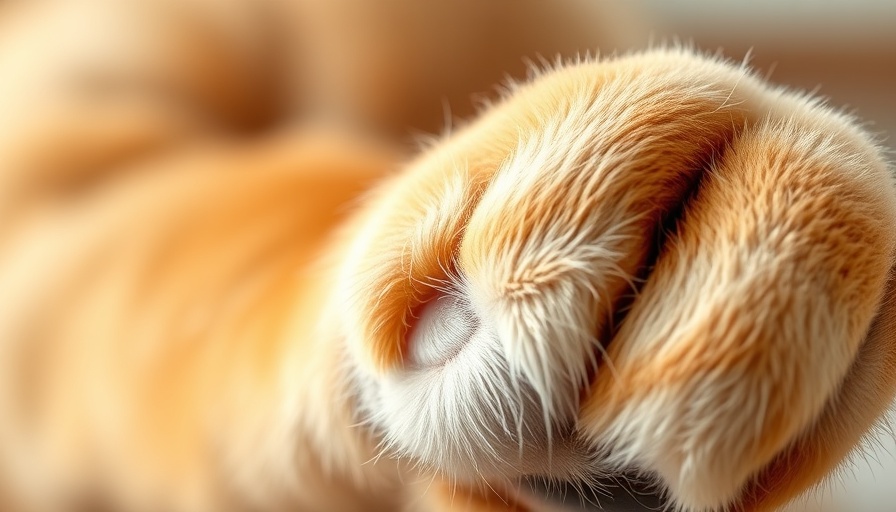
Understanding Yeast Infections in Dogs: What Pet Parents Should Know
For many pet owners, the hidden struggle of yeast infections in dogs can be a surprising revelation. These pesky infections, often manifesting as relentless itching, chewing paws, or a distinct musty odor, signal an imbalance within your furry friend’s body. Yeast infections, driven primarily by the fungus Malassezia pachydermatis, thrive in warm and humid environments. This makes areas such as the ears, armpits, and skin folds prime real estate for overgrowth.
Why Does Yeast Overgrow in Our Canine Companions?
Several factors contribute to yeast overgrowth in dogs, making it crucial for pet owners to be informed. High-starch diets, including common kibble, can often be a silent culprit by providing yeast with the sugars it craves. Those pesky food intolerances, suppressed immune systems, excessive bathing, and even antibiotic use can tip the scales in favor of yeast.
Moreover, cleanliness plays a crucial role. Wet paws or unclean ears can become the breeding ground for yeast, and environmental allergens can exacerbate the issue further. Pet owners must remain vigilant, recognizing the signs early and taking preventive measures.
Stocking Your Natural Remedy Arsenal
With a solid understanding of what fuels yeast, pet parents can focus on natural remedies to combat these infections. Here are some homemade, gentle topical treatments that are safe and effective:
1. Apple Cider Vinegar (ACV) Rinse
Known for its many health benefits, ACV works wonders for canine yeast infections. It restores skin pH and possesses antifungal properties that can help reduce yeast overgrowth.
Recipe: Mix equal parts raw, unfiltered apple cider vinegar with filtered water.
Application: Spray onto affected areas, avoiding contact with open wounds. Alternatively, it can be used as a rinse after bath time.
Use Frequency: 1-2 times a day, ensuring the solution air-dries thoroughly.
Note: Avoid using ACV on broken or irritated skin, as it may cause stinging.
2. Coconut Oil
Coconut oil isn't just for smoothies—it’s also a powerful ally in the battle against yeast! Rich in lauric acid, it serves as a natural antifungal and antimicrobial agent.
How to Use: Gently warm the oil in your hands before massaging it into affected areas. For an added boost, infuse with dried calendula or chamomile for enhanced skin-soothing benefits.
Preventative Measures: Diet and Lifestyle Changes
Taking care of a dog's skin isn't just about treating symptoms; it’s also about prevention. Pet owners should consider a balanced diet that minimizes sugar and starch intake.
Consulting with your vet about the best dietary options is essential. Avoid kibble that contains high-starch ingredients like peas and potatoes, as well as treats made from grains like wheat and corn. Homemade meals using fresh ingredients and a personalized diet plan may significantly reduce the risk of yeast flare-ups.
Creating a Clean and Healthy Environment
Work on keeping your dog's living space clean and dry. Regular grooming, including baths with gentle, unscented shampoos, can help eliminate any excess moisture. Ensuring they get enough fresh air and exercise can also keep them balanced and healthy.
When to Seek Veterinary Assistance
While natural remedies can be effective, it is essential to monitor the situation closely. If your dog's symptoms persist or worsen, consult with your veterinarian. They can help rule out more serious conditions and suggest appropriate treatments.
Conclusion: Empowering Pet Parents
Yeast infections in dogs might seem daunting, but with the proper knowledge and natural remedies, pet owners can take significant steps toward alleviating their furry companion’s discomfort. By combining effective home remedies, dietary modifications, and creating a clean living environment, we can support our dog’s health and well-being. Don’t hesitate to seek help from a vet when needed; after all, our pets deserve the best care!
If you suspect your dog is suffering from a yeast infection, take proactive steps today. Embrace these natural remedies to improve your pet’s quality of life while fostering a deeper bond through attentive care.
 Add Row
Add Row  Add
Add 


Write A Comment